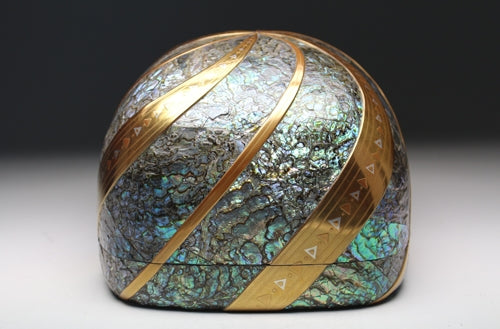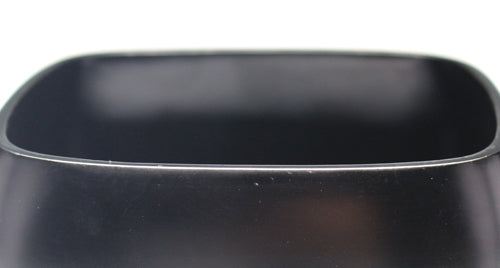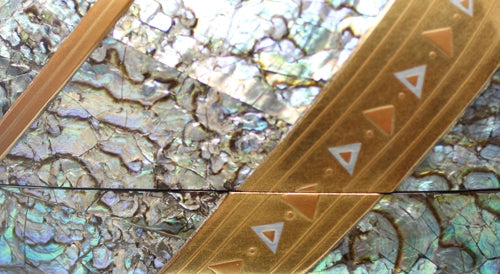1
/
of
9
Product number: SKU:21497
21497 Shunsho Hattori (Glowing Shell Decoration Box) HTTORI Shunsho
21497 Shunsho Hattori (Glowing Shell Decoration Box) HTTORI Shunsho
Sold out
Length (15cm) Width (15cm) Height (11.3cm)
Length (15cm) Width (15cm) Height (11.3cm)
[Price inquiry item]
Due to the shopping cart system settings , the price will be displayed as "0 yen (tax included)" , but we will inform you of the actual price when you contact us. For inquiries, please contact us here .
Shunsho Hattori Born in 1943, he was first selected for the Nitten Exhibition in 1963. Since then, he has exhibited his work at exhibitions including the Nitten Exhibition, and has won numerous prestigious awards. In 1995, he met with Pope John Paul II and presented him with a book stand. In the same year, he created a display shelf for the guest room of the Kyoto State Guest House. He is currently a council member of the Nitten Exhibition, a managing director of the Japan Machinery Association, and a member of the Kyoto Prefectural Crafts and Artists Association. Member of the Kyoto Lacquer Artists Association and the Sokokai.
A photo of this work is posted on the website of the 2008 "Hattori Shunsho Lacquer Art Exhibition" at Ginza Wako Hall.
The sun shines brightly over the coral reef sea. If you were to look up at the surface of the water from within the sea, would it look like this? A gust of wind creates ripples on the surface of the water, rays of light and the water flicker. A swell of energy converging on a single point. The obsidian shell decorative box "Kosai" embodies the world of "Sun, Moon, Waves and Wind," the lifelong theme of lacquer artist Shunsho Hattori.
Hattori says, "I want to use lacquer, a traditional Japanese culture, and pass on the techniques established in the Heian period, while pursuing practical applications that are applicable to the present day." The innovative designs on the incense burners and tea utensils, and the forms of the decorative boxes are reminiscent of modern art. Moreover, his meticulous consideration and aesthetic sense, which are based on the premise that each item will be used, are evident everywhere. The dazzling, solemn light of the gold lacquer ware is decorated with classical patterns, and the blue or pearl-colored oyster shells imported from Mexico and New Zealand add a gorgeous touch to the pieces. Utility and beauty, tradition and modernity, Japanese and Western styles blend together in a beautiful way. That is Hattori's work.
Both the oyster shell and the jewel beetle wings, which have been featured since his last solo exhibition, are difficult materials to obtain, and only a limited number of parts can be used in his works. Shells grow by feeding on seaweed, and their colors vary depending on the pigments in the algae, and with jewel beetles, only the thin tip of the wing can be used. Nevertheless, his encounter with the jewel beetle was a striking one. He spent three years trying and erroring to find the best way to use it to bring out its beauty. "In the world of crafts, lacquer art is the only medium that allows you to use a variety of materials," says Hattori, who is always searching for new materials.
This will be his fourth solo exhibition, and more than 70 pieces will be on display, including folding screens, wall artworks, decorative boxes, and tea utensils. The mystical beauty of the material and the lacquer artist's creative ability to express the richness and moisture of the human heart through lacquer will come together to create a gorgeous and elegant world of lacquer.



[Price inquiry item]
Due to the shopping cart system settings , the price will be displayed as "0 yen (tax included)" , but we will inform you of the actual price when you contact us. For inquiries, please contact us here .
Shunsho Hattori Born in 1943, he was first selected for the Nitten Exhibition in 1963. Since then, he has exhibited his work at exhibitions including the Nitten Exhibition, and has won numerous prestigious awards. In 1995, he met with Pope John Paul II and presented him with a book stand. In the same year, he created a display shelf for the guest room of the Kyoto State Guest House. He is currently a council member of the Nitten Exhibition, a managing director of the Japan Machinery Association, and a member of the Kyoto Prefectural Crafts and Artists Association. Member of the Kyoto Lacquer Artists Association and the Sokokai.
A photo of this work is posted on the website of the 2008 "Hattori Shunsho Lacquer Art Exhibition" at Ginza Wako Hall.
The sun shines brightly over the coral reef sea. If you were to look up at the surface of the water from within the sea, would it look like this? A gust of wind creates ripples on the surface of the water, rays of light and the water flicker. A swell of energy converging on a single point. The obsidian shell decorative box "Kosai" embodies the world of "Sun, Moon, Waves and Wind," the lifelong theme of lacquer artist Shunsho Hattori.
Hattori says, "I want to use lacquer, a traditional Japanese culture, and pass on the techniques established in the Heian period, while pursuing practical applications that are applicable to the present day." The innovative designs on the incense burners and tea utensils, and the forms of the decorative boxes are reminiscent of modern art. Moreover, his meticulous consideration and aesthetic sense, which are based on the premise that each item will be used, are evident everywhere. The dazzling, solemn light of the gold lacquer ware is decorated with classical patterns, and the blue or pearl-colored oyster shells imported from Mexico and New Zealand add a gorgeous touch to the pieces. Utility and beauty, tradition and modernity, Japanese and Western styles blend together in a beautiful way. That is Hattori's work.
Both the oyster shell and the jewel beetle wings, which have been featured since his last solo exhibition, are difficult materials to obtain, and only a limited number of parts can be used in his works. Shells grow by feeding on seaweed, and their colors vary depending on the pigments in the algae, and with jewel beetles, only the thin tip of the wing can be used. Nevertheless, his encounter with the jewel beetle was a striking one. He spent three years trying and erroring to find the best way to use it to bring out its beauty. "In the world of crafts, lacquer art is the only medium that allows you to use a variety of materials," says Hattori, who is always searching for new materials.
This will be his fourth solo exhibition, and more than 70 pieces will be on display, including folding screens, wall artworks, decorative boxes, and tea utensils. The mystical beauty of the material and the lacquer artist's creative ability to express the richness and moisture of the human heart through lacquer will come together to create a gorgeous and elegant world of lacquer.



Share

























